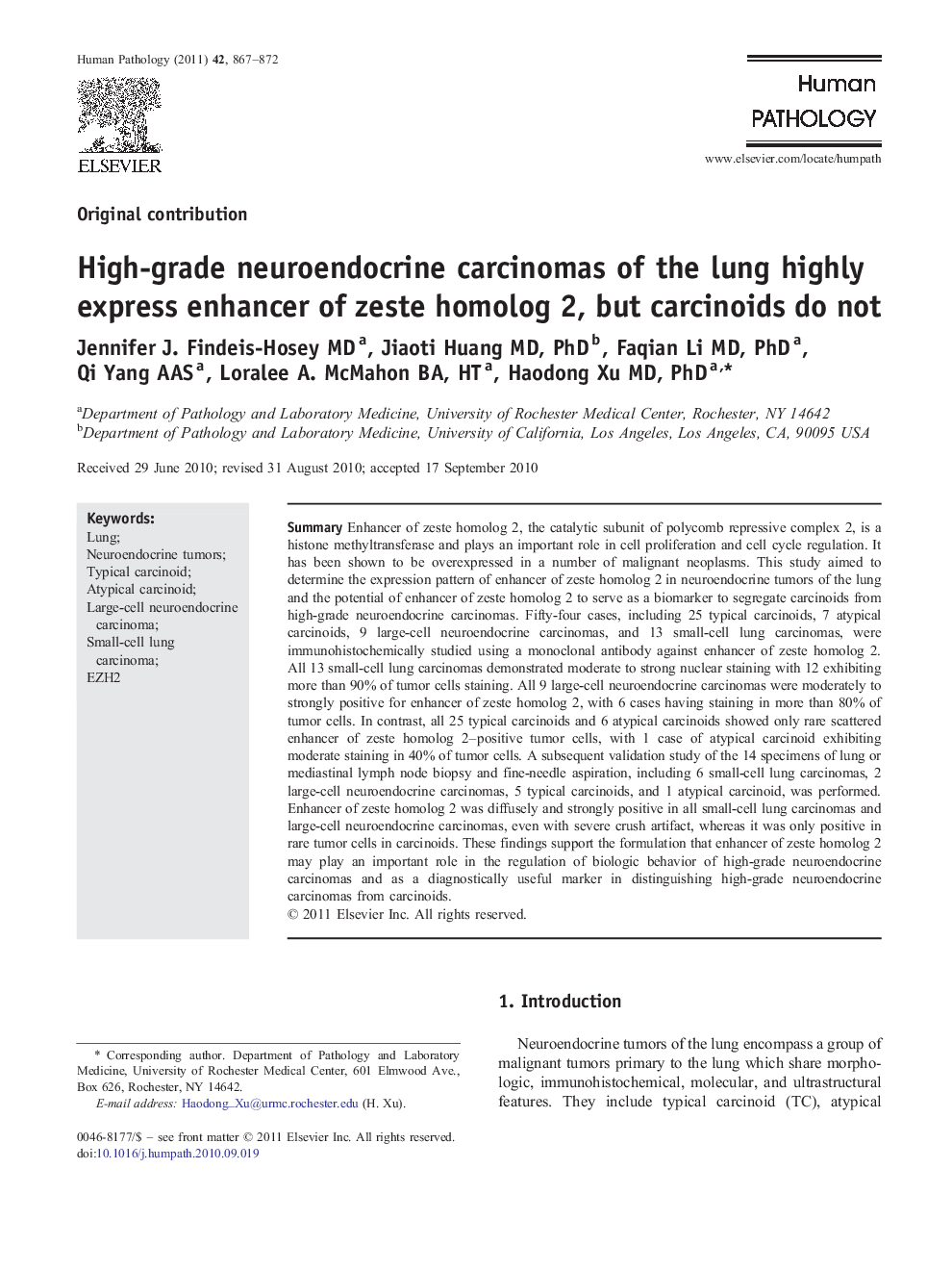| Article ID | Journal | Published Year | Pages | File Type |
|---|---|---|---|---|
| 4134035 | Human Pathology | 2011 | 6 Pages |
SummaryEnhancer of zeste homolog 2, the catalytic subunit of polycomb repressive complex 2, is a histone methyltransferase and plays an important role in cell proliferation and cell cycle regulation. It has been shown to be overexpressed in a number of malignant neoplasms. This study aimed to determine the expression pattern of enhancer of zeste homolog 2 in neuroendocrine tumors of the lung and the potential of enhancer of zeste homolog 2 to serve as a biomarker to segregate carcinoids from high-grade neuroendocrine carcinomas. Fifty-four cases, including 25 typical carcinoids, 7 atypical carcinoids, 9 large-cell neuroendocrine carcinomas, and 13 small-cell lung carcinomas, were immunohistochemically studied using a monoclonal antibody against enhancer of zeste homolog 2. All 13 small-cell lung carcinomas demonstrated moderate to strong nuclear staining with 12 exhibiting more than 90% of tumor cells staining. All 9 large-cell neuroendocrine carcinomas were moderately to strongly positive for enhancer of zeste homolog 2, with 6 cases having staining in more than 80% of tumor cells. In contrast, all 25 typical carcinoids and 6 atypical carcinoids showed only rare scattered enhancer of zeste homolog 2–positive tumor cells, with 1 case of atypical carcinoid exhibiting moderate staining in 40% of tumor cells. A subsequent validation study of the 14 specimens of lung or mediastinal lymph node biopsy and fine-needle aspiration, including 6 small-cell lung carcinomas, 2 large-cell neuroendocrine carcinomas, 5 typical carcinoids, and 1 atypical carcinoid, was performed. Enhancer of zeste homolog 2 was diffusely and strongly positive in all small-cell lung carcinomas and large-cell neuroendocrine carcinomas, even with severe crush artifact, whereas it was only positive in rare tumor cells in carcinoids. These findings support the formulation that enhancer of zeste homolog 2 may play an important role in the regulation of biologic behavior of high-grade neuroendocrine carcinomas and as a diagnostically useful marker in distinguishing high-grade neuroendocrine carcinomas from carcinoids.
